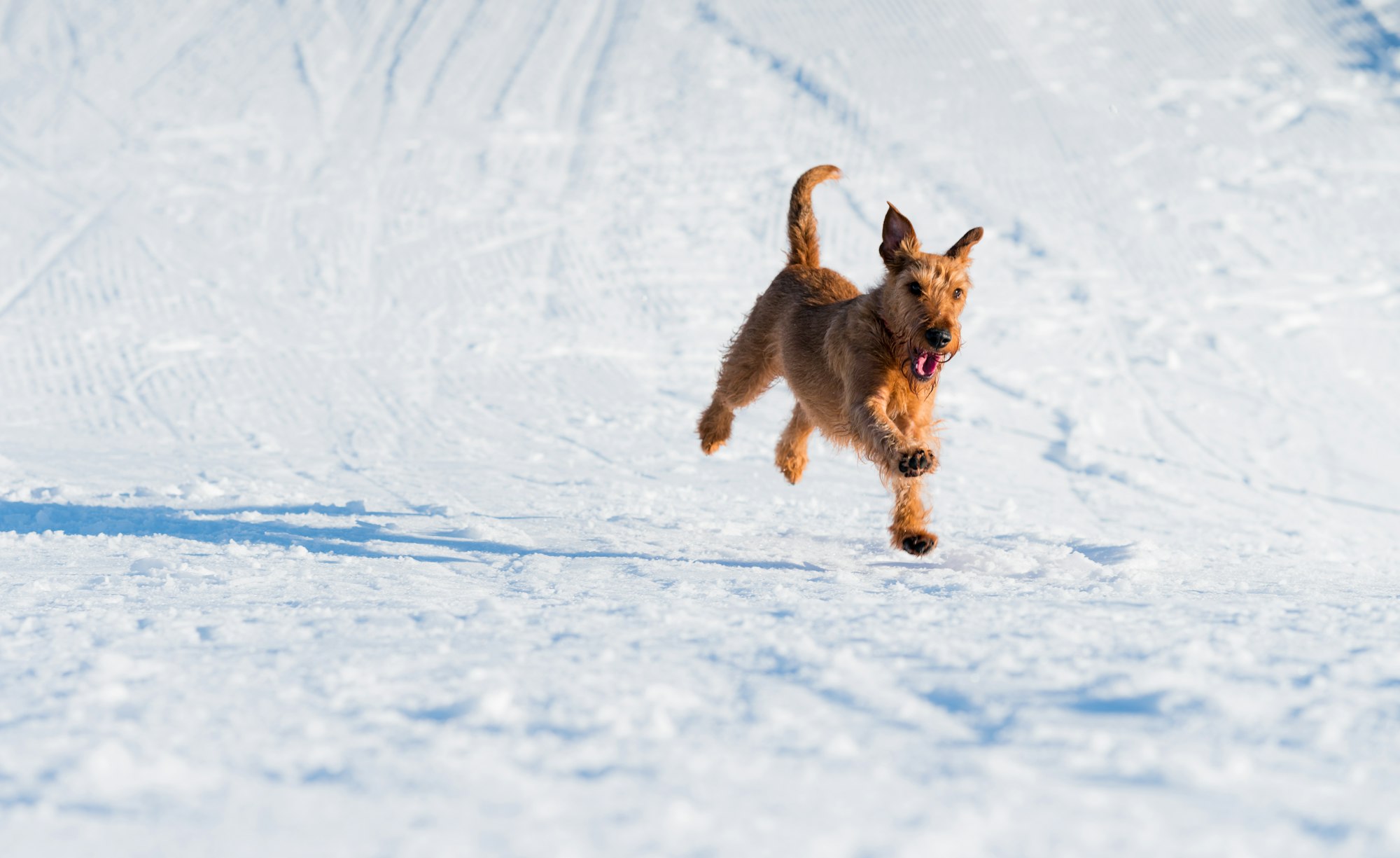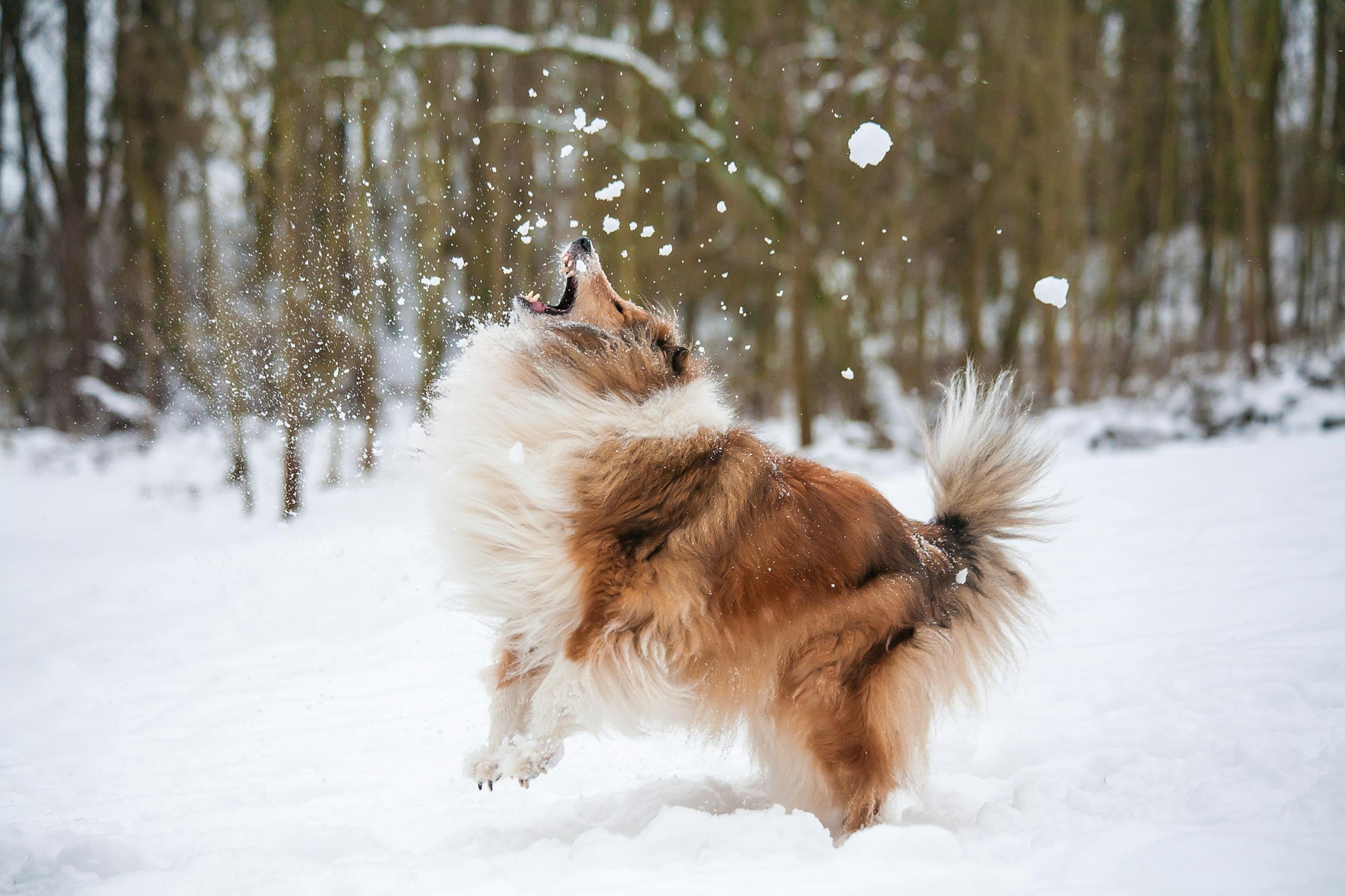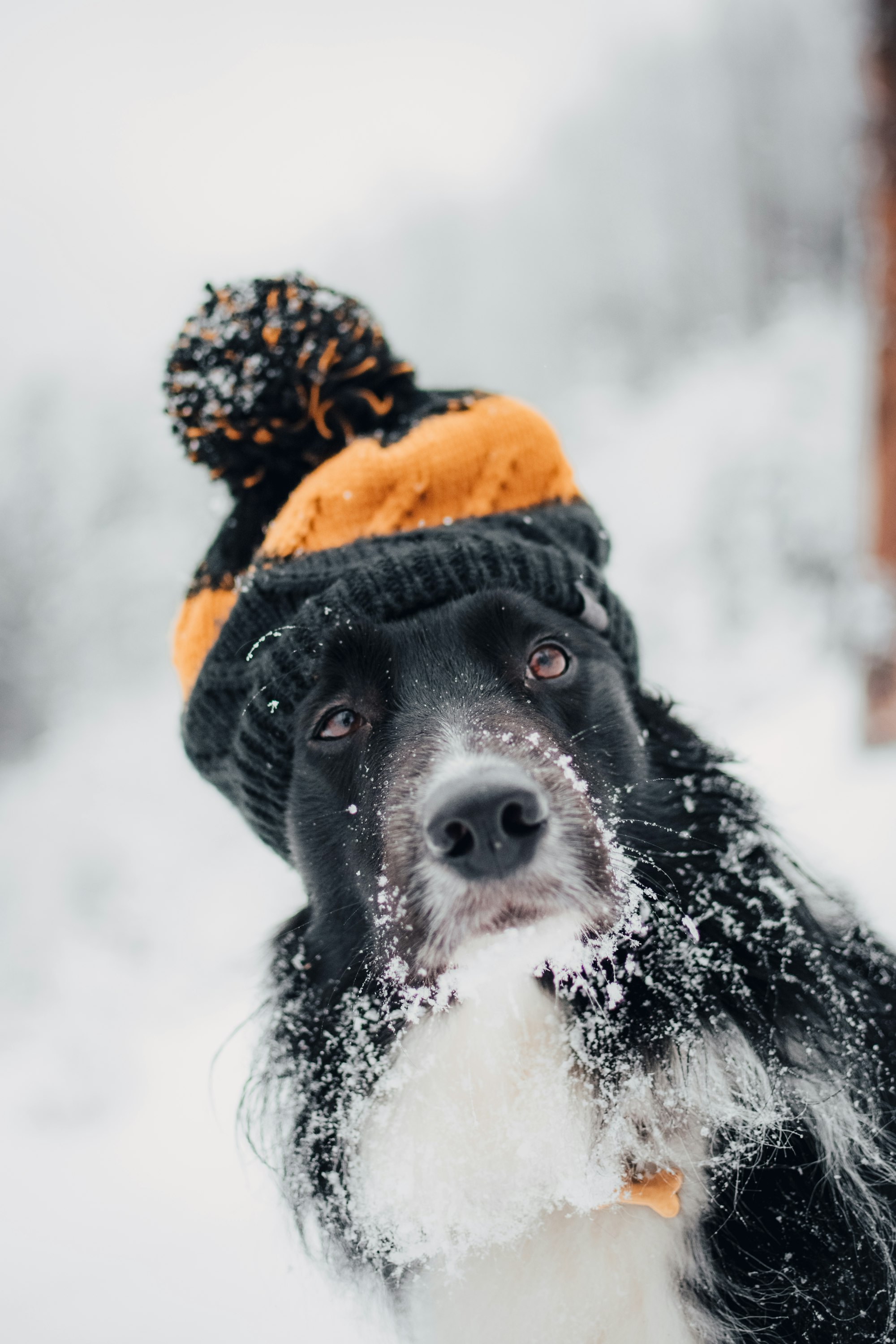Ah, winter! The season of snowflakes, cozy fires, and... reluctant dogs? If you've ever tried coaxing your four-legged friend outside for a snowy outing, only to be met with a firm "nope", you're not alone. Many dog owners find themselves puzzled when their usually eager companions suddenly turn apprehensive at the sight of a snow-covered ground. While it can be a surprising behavior to witness, there are several factors at play here. In this article, we'll delve into the reasons behind your dog's snowy hesitations and provide actionable solutions to make winter outings enjoyable for both of you.

Briefly Describing the Scenario:
Snow has freshly blanketed the ground, creating a beautiful and crisp winter landscape. Many dog owners eagerly gear up for their regular walk, anticipating their dog's enthusiasm for a frolic in the snow. But, to their surprise, when the door swings open, their energetic companion balks at the threshold. Some might plant their paws firmly, refusing to move, while others might gingerly test the snowy surface, only to hastily retreat back indoors. This unexpected hesitation or outright refusal can leave owners puzzled, especially if their dog typically loves outdoor adventures.
Understanding the Hesitation:
- Physical Discomfort: Some dogs might feel the cold more keenly, especially breeds not acclimated to colder climates.
- New Sensation: For puppies or dogs experiencing snow for the first time, the unfamiliar texture and temperature can be off-putting.
- Changed Environment: The transformed landscape can be confusing. Familiar landmarks might be obscured, making some dogs feel uneasy.
Common Signs of Discomfort:
- Whining or Pacing: Indicators that the dog is unsure or anxious about the snow.
- Lifting Paws: The dog might be trying to communicate that the cold is uncomfortable.
- Huddling or Shivering: Clear signs of cold, indicating the need for protection or warmth.
Breeds More Likely to Refuse Snowy Outings:
- Short-Haired Breeds: Dogs like Greyhounds or Chihuahuas might feel the cold more intensely.
- Smaller Breeds: They have a larger surface area relative to their volume, which can lead to faster heat loss.
- Senior Dogs: Older dogs might struggle with the cold due to joint issues or reduced metabolism.
Adapting to Their Needs:
- Paw Protection: Consider booties to protect against cold surfaces and salt.
- Winter Gear: Coats or sweaters can provide added warmth for breeds less equipped for cold.
- Indoor Play: If outdoor conditions aren't favorable, engage them with indoor toys and activities.
Remember, while snowy landscapes can be enchanting for humans, dogs might need a little extra understanding and care during these chilly months.
Understanding the Behavior
When the winter months roll in and the ground becomes a snowy expanse, not all dogs bound out with joy. It's essential to grasp the reasons behind their reluctance, ensuring that their needs are met and discomforts alleviated. Let's delve into the common causes of this behavior.
- Sensitivity to Cold:
- Breed Considerations: Some breeds are naturally suited for cold, while others aren't. Siberian Huskies thrive, but a Whippet? Not so much.
- Age and Health Factors: Puppies, senior dogs, or those with certain health conditions may have lower cold tolerance.
- Past Negative Experiences:
- Snowballing Issues: Accumulation of snowballs in fur can be painful and uncomfortable.
- Slips and Falls: An unfortunate slide on a slick patch of ice can make a dog wary of similar terrains.
- Salt and Chemical Irritants: Ice melting agents can be harsh on a dog's paws, leading to burns or discomfort.
- Uncertainty About the Changed Environment:
- Visual Disorientation: Familiar landmarks get buried under snow, making surroundings seem foreign.
- Scent Masking: Snow can cover or change the scents they rely on, adding to their hesitation.
Building Confidence in Snow:
- Positive Reinforcement:
- Treats and Praises: Rewarding tentative steps in snow can build a positive association.
- Play Sessions: Introducing snow through fun games can make it less intimidating.
- Safe Exploration:
- Leashed Walks: Initially, keeping them on a leash can provide a sense of security.
- Familiar Pathways: Traversing known paths, even if snow-covered, can be less daunting than exploring new areas.
Adapting to Their Winter Needs:
- Gear Up:
- Paw Protectors: Booties can shield against cold and harmful agents.
- Warm Clothing: Consider doggy sweaters or jackets for added warmth.
- Health Check:
- Regular Vet Visits: Ensure they're in good health and can handle the colder months.
- Moisturizing Paws: To prevent cracking or dryness, use pet-safe balms.
- Preparing Your Dog for the Snow
- Tips to introduce your dog to snow gradually.
- Importance of checking for ice balls between the toes or snow accumulating on fur.
- The benefit of dog winter wear – boots, coats, etc.

Making Snowy Outings Fun
As winter approaches and the first flakes begin to fall, ensuring your dog is ready for this chilly change is paramount. Just as we swap our summer flip-flops for winter boots, our dogs need a transition plan too. Here’s how you can make the snowy season pleasant and secure for your furry friend.
- Tips to Introduce Your Dog to Snow Gradually:
- First Impressions Matter: Start by letting your dog observe the snow from a distance, perhaps from the comfort of your home. Their natural curiosity might make them want to explore further.
- Short Sessions: Initially, limit the outdoor sessions to a few minutes, gradually increasing the time as they become more comfortable.
- Encourage Play: Use their favorite toy or play fetch in the snow. Associating snow with fun activities can help reduce their hesitation.
- Importance of Checking for Ice Balls Between the Toes or Snow Accumulating on Fur:
- Discomfort & Pain: Ice balls can form between the toes, causing significant discomfort. Regularly inspecting and removing them is crucial.
- Reduced Mobility: Accumulation of snow on their fur, especially around the legs and belly, can restrict movement and be cold against their skin.
- Avoiding Skin Issues: Left unchecked, these accumulations can lead to skin irritations or infections, especially if the snow contains salt or other chemicals.
- The Benefit of Dog Winter Wear – Boots, Coats, etc.:
- Paw Protection with Boots: They not only provide a barrier against the cold ground but also prevent sharp ice or chemicals from hurting the paws.
- Maintain Body Heat with Coats: Especially for short-haired or smaller breeds, coats can be a game-changer, preserving their body heat.
- Visibility with Reflective Gear: Winter means shorter days. Reflective jackets or collars ensure your dog is visible during low-light conditions, keeping them safe.
Equipping your dog with the right gear and introducing them to snow in a patient, phased manner ensures they can enjoy the winter months as much as you do. Remember, it's all about making them feel safe and comfortable in this new environment.
Winter's fury doesn't mean your dog's activity needs to be put on a cold hold. Sometimes, the snow is too much, either for our pets or due to extreme conditions. When outdoor adventures are off the table, there's a myriad of ways to keep our furry friends engaged and active indoors.

- Ideas for Indoor Exercises and Games:
- Tug-of-War: With a sturdy toy, this game can be both fun and physically demanding for dogs.
- Hide and Seek: A classic that not only exercises their body but also their sense of smell and intelligence. Hide treats or toys and let your dog find them.
- Indoor Obstacle Course: Using cushions, furniture, and toys, create a makeshift obstacle course. It helps in agility training and burns off energy.
- Fetch in the Hallway: A more controlled version of the outdoor game, throwing a soft toy down a long hallway can still give them the thrill of the chase.
- Importance of Mental Stimulation Through Toys and Puzzles:
- Brain Health: Just as physical exercise keeps a dog's body fit, mental stimulation ensures their cognitive functions remain sharp.
- Preventing Boredom: Engaging their mind reduces feelings of restlessness and can prevent destructive behaviors often associated with boredom.
- Interactive Toys: Toys like treat-dispensing balls or puzzles require dogs to think and strategize to get their reward. It's fun and challenges them mentally.
- Learning Tricks: Indoor time can be a great opportunity to teach them new commands or tricks, providing both mental stimulation and bonding time.
As winter casts its chilly spell, ensuring the safety of our furry companions becomes paramount. The snowy wonderland, while enchanting, brings with it a set of challenges that every dog owner should be aware of. By staying informed and vigilant, you can ensure that every winter outing is not just fun, but also safe.
- Dangers of Salt and Other Chemicals on Roads and Sidewalks:
- Chemical Burns: Commonly used de-icing agents, while effective for roads and sidewalks, can be harsh on a dog's sensitive paw pads, leading to burns or irritations.
- Toxicity: Ingesting road salt or other chemicals, often when dogs lick their paws post-walk, can lead to gastrointestinal issues or other health problems.
- Prevention and Care: Consider rinsing or wiping down your dog's paws after each walk. Booties can serve as a protective barrier, and pet-safe de-icers are a better choice for areas your dog frequents.
- Keeping Outings Short During Extreme Cold or Icy Conditions:
- Hypothermia Risks: Prolonged exposure to extreme cold can lead to a drop in body temperature, posing a risk of hypothermia, especially for smaller or short-haired breeds.
- Slipping Hazards: Icy conditions can be treacherous, not just for humans but also for dogs. Slips can result in sprains, fractures, or other injuries.
- Monitoring for Signs: If your dog starts to shiver, lift their paws frequently, or show any signs of discomfort, it's time to head back indoors.
- Choose Optimal Times: If possible, try to schedule walks during the warmest part of the day when the sun might have melted some of the ice, making the walk safer and more enjoyable.
In essence, while winter outings can be filled with frolic and play, they should always be underpinned by a "Safety First" approach. By staying informed and proactive, you can ensure your dog enjoys the snowy days with both joy and well-being.
Conclusion
As the winter winds blow and landscapes transform, it becomes imperative for every dog owner to tune in to the subtle cues and feelings of their four-legged companions. Each dog, with their unique personality and preferences, may react differently to the season's challenges. Whether it's their hesitation at a snowy doorway, their eagerness to play, or their need for warmth and safety, every gesture speaks of their comfort levels and needs.
Understanding and accommodating these feelings is not just about ensuring their physical well-being but also about nurturing the bond of trust and companionship. By being sensitive to their needs, providing alternatives when the cold gets too much, and always prioritizing their safety, we pave the way for a winter season filled with joyous memories and shared experiences.
After all, as the snowflakes dance around, it's the warmth of understanding and care that truly makes the winter months special for both the dog and the owner.
FAQs
- Are certain dog breeds more suited to cold weather?
- Absolutely. Some breeds, such as Siberian Huskies, Alaskan Malamutes, and Saint Bernards, have evolved with thicker double coats designed to provide insulation against frigid temperatures. On the flip side, breeds like Chihuahuas, Greyhounds, and Dachshunds have less natural protection against the cold and often require additional measures to stay warm.
- How can I discern if my dog is feeling too cold during a walk?
- Your dog will give multiple cues. Beyond shivering, a dog might become lethargic, show reluctance in moving forward, or even try to turn back towards home. Whining, anxious behavior, and frequently lifting or licking their paws are also indicators. Always monitor their behavior and cut the walk short if needed.
- Is it advisable for my dog to consume snow?
- A nibble here and there might be harmless, but regular or large consumption isn't recommended. Snow can contain pollutants, chemicals, or even debris. Moreover, eating a lot of snow can lower their core body temperature, leading to potential health issues.
- Is winter clothing truly necessary for dogs?
- While nature has equipped many breeds for cold climates, many dogs benefit from added protection. Elderly dogs, puppies, dogs with medical conditions, or those with thin coats can be more susceptible to cold and might need clothing to maintain their body heat.
- How frequently should I inspect my dog's paws during winter?
- After every outdoor session, it's wise to inspect and clean their paws. This helps to ensure no ice, salt, or chemicals are clinging to them, which could lead to irritation or ingestion risks if the dog licks them.
- My dog dislikes wearing booties. What can I do?
- Not all dogs take well to booties. As an alternative, protective paw balms or waxes can be applied. These products create a barrier against salt and cold. Also, regular paw checks and post-walk cleanings can minimize risks.
- How can I keep my dog active indoors during extreme cold spells?
- Innovate with indoor activities. Set up mini obstacle courses using pillows, teach them new tricks, or engage in interactive games. There are many toys available that challenge a dog's intellect, making them problem-solve for treats.
- Could the cold weather have other health implications for my dog?
- Yes, apart from the immediate cold-related risks, chilly weather can aggravate conditions like arthritis, making joints stiff and painful. Breeds predisposed to respiratory issues might struggle in colder air, so it's vital to observe and consult a vet if any concerning symptoms arise.




